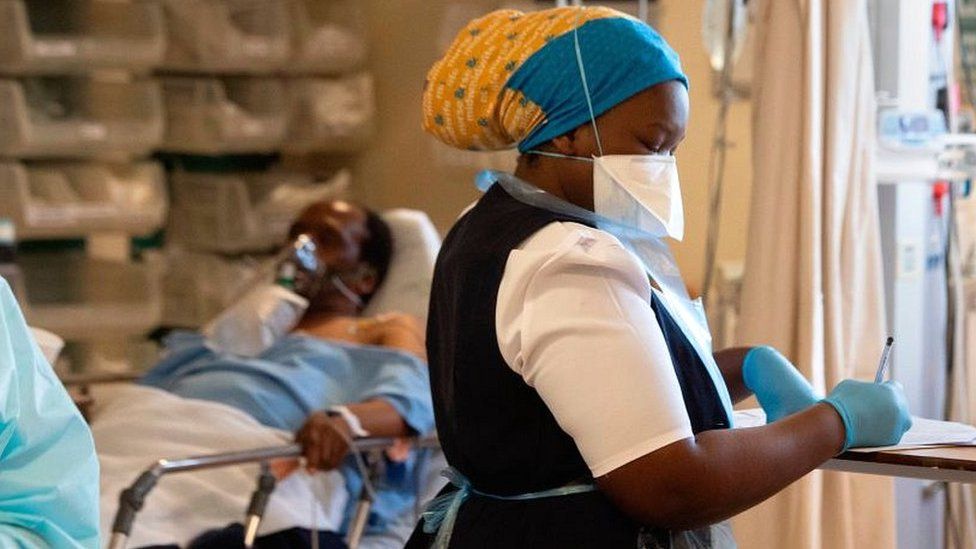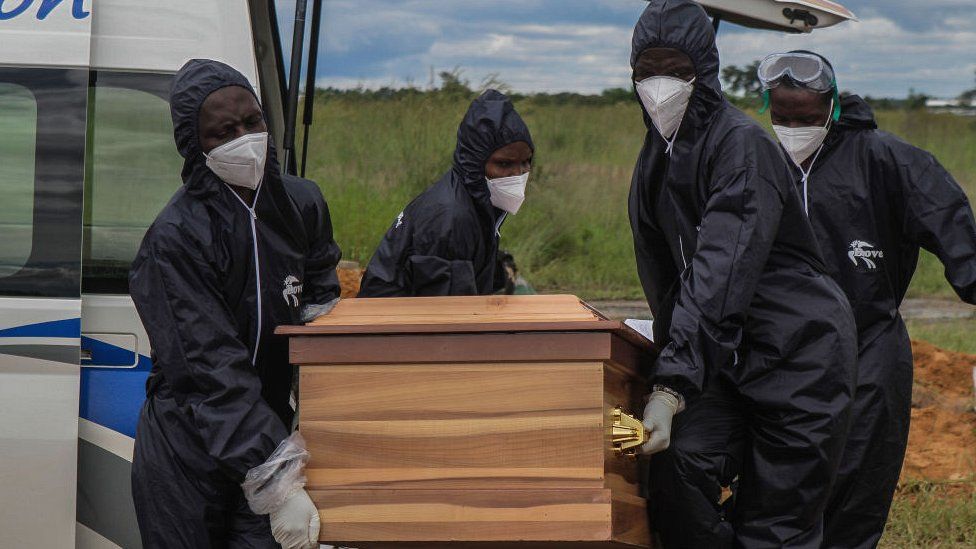Experts believe the spread of new coronavirus variants in Africa has contributed to an increase in both cases and deaths reported in many countries on the continent.
There’s also concern that these variants can’t easily be tracked because the testing required to identify them isn’t widely available.
What’s happening with variants?
Most countries on the continent have experienced a second wave of the pandemic and some, such as Kenya, Egypt and Tunisia, have seen a third wave.
This new wave of infections is thought to be partly associated with the emergence of some variants that are more transmissible.
Uganda is the first country on the continent to confirm the presence of a variant first identified in India late last year. It was identified in a sample taken from a traveller from India in late March.
The WHO says preliminary analysis shows this variant has had a “higher growth rate than other circulating variants in India, suggesting potential increased transmissibility.”
A new variant of the virus emerged in South Africa last year, and contributed to record case numbers in the southern African region, according to the World Health Organization (WHO).

Elsewhere in Africa, this variant had been recorded in Angola, Botswana, Cameroon, Comoros, DR Congo, eSwatini, Ghana, Kenya, Lesotho, Libya, Malawi, Mauritius, Mozambique, Namibia, Rwanda, Zambia and Zimbabwe.
Over the past week, four more countries – Ivory Coast, Equatorial Guinea, Madagascar and Togo – have confirmed presence of the variant.
It’s highly likely to have reached other countries on the continent, but few have the capacity to carry out the specialised genomic sequencing required to detect coronavirus variants.
In Nigeria, scientists have also identified a new variant of the virus, although there is currently no evidence to indicate it is contributing to increased transmission.
The variant was identified in a sample collected in late November from a patient in Lagos state, and has been detected in four other states in the country.
Twenty countries have also reported presence of a Covid-19 variant first identified in the UK.
The WHO and the African Centres for Disease Control launched a network of laboratories last year to try to boost the continent’s capacity to identify these variants.
It said the emergence of new, and more contagious variants “reinforced the need to step up genomic surveillance.”
This involves analysing the code of the virus to understand its genetic makeup.
However, a recent article in The Lancet pointed out that while efforts were underway to expand this type of work, there were issues around funding, as well as shortages of reagents and staff with the skills required.
What’s happening to case numbers?
Over the past month, new cases across the continent declined by 0.3%, according to the CDC.
New cases have been rising in north and east Africa (in countries like Kenya, Ethiopia, Egypt,Libya and Tunisia), but dropping in south and west Africa.
Most countries have launched Covid-19 immunisation campaigns, but there are still a few countries yet to roll out or even acquire vaccines.
And many countries have concentrated on priority groups such as healthcare workers in the initial vaccination phase.
Death rates have been rising
During the first stage of the pandemic, Africa’s overall fatality rate – the proportion of those with Covid who then die – was lower than elsewhere in the world.
There were a number of theories put forward as to why that might be the case, such as the relatively younger population, and possible cross-immunity from other coronaviruses.

But the Africa CDC has now warned about rising fatality rates in the continent, saying that of the 55 countries they monitor, 21 are now reporting fatality rates above the current global average of 2.2%.
The fatality rate for Africa has crept up since July last year when it was on average 2.1% – to 2.7% in April this year (measured over the duration of the pandemic).
The global fatality rate has fallen since the start of the pandemic, which in itself would put more African countries above the global average.
And fatality rates are also affected by how much testing is done – a country with low levels of testing will show a higher death rate because many non-fatal Covid cases are going undetected.
More importantly, data for deaths should be treated with caution, given the wide variations in how countries record them.
In South Africa, research into excess deaths – that’s the number of deaths in a certain period above what would normally be expected – shows that there were 153,668 more deaths between 6 May last year and 10 April this year.
The official death toll from Covid-19 since the start of the pandemic is just above 53,000.
And South Africa was just one of eight countries on the continent that the BBC found in a recent investigation had adequate death registration systems.
So coronavirus deaths across Africa as a whole are likely to be under-recorded.
There are wide variations in testing rates and while some countries have reduced testing, others have maintained or even increased it at different points during the pandemic.
SOURCE: BBC





